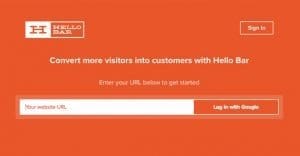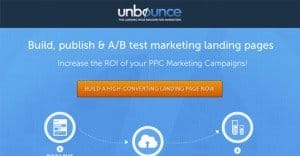How to Use Pinterest to Increase eCommerce Sales

Pinterest is one of the biggest and more innovative social networks to spring up over the last few years. It’s quickly become a haven for savvy marketers, but it’s also an elephant graveyard littered with the failed profiles of businesses that didn’t know how to use it.
Avoid becoming a dead elephant; use Pinterest properly for your web business. It’s not all that difficult; it’s just a little different from how social networks normally operate.
Register a Business Account
The first thing you need to do is make sure you’re registering an account as a business, not as a personal user. This grants you access to various beneficial features, including the built-in Pinterest Analytics. It’s not exactly as robust as Google Analytics or Facebook Insights, but it’s native to the platform and records most of the metrics you could want to see by default.
When you’re filling out your profile, make sure you have a logo as your profile picture. You’re going to need to be as consistent across your brand as possible. This means a recognizable logo, the same website information as you use on Facebook and other locations, and other such information. If your have a physical location as well, make sure your address information is consistent.
If you already had a personal account before business accounts were created, you’re in luck; you don’t need to delete and start over. Instead, all you need to do is go through the “convert to business account” process. You’ll pick a type of business – Professional, Public Figure, Media, Brand, Retailer, Online Marketplace, Local Business, Non-Profit, Other – and continue as usual.
Verify Your Account
As with every social network, there’s always a chance that someone will create an imitator profile meant to look like your business, piggyback off your existing customer base and sell lookalike products. Rather than allow this to happen, you should verify your account. A verification stamp tells users that you’re the official account representing your business, and it gives you additional leverage to use if an imitator does crop up.
To verify, you will need to use either the meta tag or the HTML file method.
- The meta tag method is simple. Click to edit your profile and click “verify website” in the options. Verify by meta tag. Pinterest will generate a code snippet, which you need to add to the <head> section of your homepage. Once that code is pasted and live, return to Pinterest and complete verification.
- The HTML file verification is slightly different. You still need to edit your profile and click to verify, but this time click to download the verification file. Pinterest will give you a file, which you need to put into your root directory. Once the file is in place, return to Pinterest and click to finish verification.
- If you need instructions for a given web host, Pinterest has a number of them on their verification page.
Use a Pinterest Hover Widget
The hover widget is a bit of code that you install on your website. It flags every image you post with a hover code. When a user moves their mouse over the image, it fades slightly and a “pin it” button appears. Clicking that button allows the user to pin the image, with a link to the blog post included, to their boards.
This is a very useful little widget, but it had a couple of drawbacks. First, there’s no real way to streamline the process of using the widget. You can’t customize how the pin displays, beyond the image it’s attached to, obviously. It also doesn’t work with mobile devices, which don’t have a cursor to hover over the image. If your traffic is primarily mobile, the widget is useless.
Network With Pinterest Influencers
Every social network has the kings and queens who have massive followings. For that matter, every industry has its own minor rulers, petty kings and dukes influential in their circles, if perhaps not globally.
Your first step should be to identify these Pinterest kings and dukes and follow them. Take the time to watch what they post. Pin the content they post that you like, though don’t blindly pin everything or it looks automatic. Leave thoughtful comments, just as you would on their blog posts.
This begins the process of starting a relationship. These people will notice your insight and will eventually return the favor, as long as you make a big enough target out of yourself.
Pin Relevant Content
At the end of the day, you’re a business looking to sell products on Pinterest. This means you need to create boards relevant to your business. Sure, a cat board might be popular and might bring in a lot of followers, but if you don’t sell cat products, it’s not doing you much good.
It comes down to knowing your audience. Who are they and what do they like? If you have a Facebook following, you can use Insights to gain a little more information here. Use what you know to create boards that are relevant to your users’ interests. When they find your boards and investigate, they’ll see your products as well.
Use Better Pictures
Pinterest works great with interesting pictures, but those interesting pictures might not be the best product display photos you have on your site. You can, thankfully, do a little switcheroo. When you pin a photo of your product, edit the pin and change the source to a link to the product page.
While you’re at it, use the Rich Pins features. With a little bit of code added to your site, you can allow Pinterest to automatically pull product information and update it as it updates on your site. Pin a product you’re selling and it will display the price and other relevant information, pulled directly from the source.
Rich snippets can include blog post author, description and link, pricing and availability for products, ratings for movies, ingredients for recipes and a whole host of other information. You’re missing out on a lot if you don’t use them.

 ContentPowered.com
ContentPowered.com





